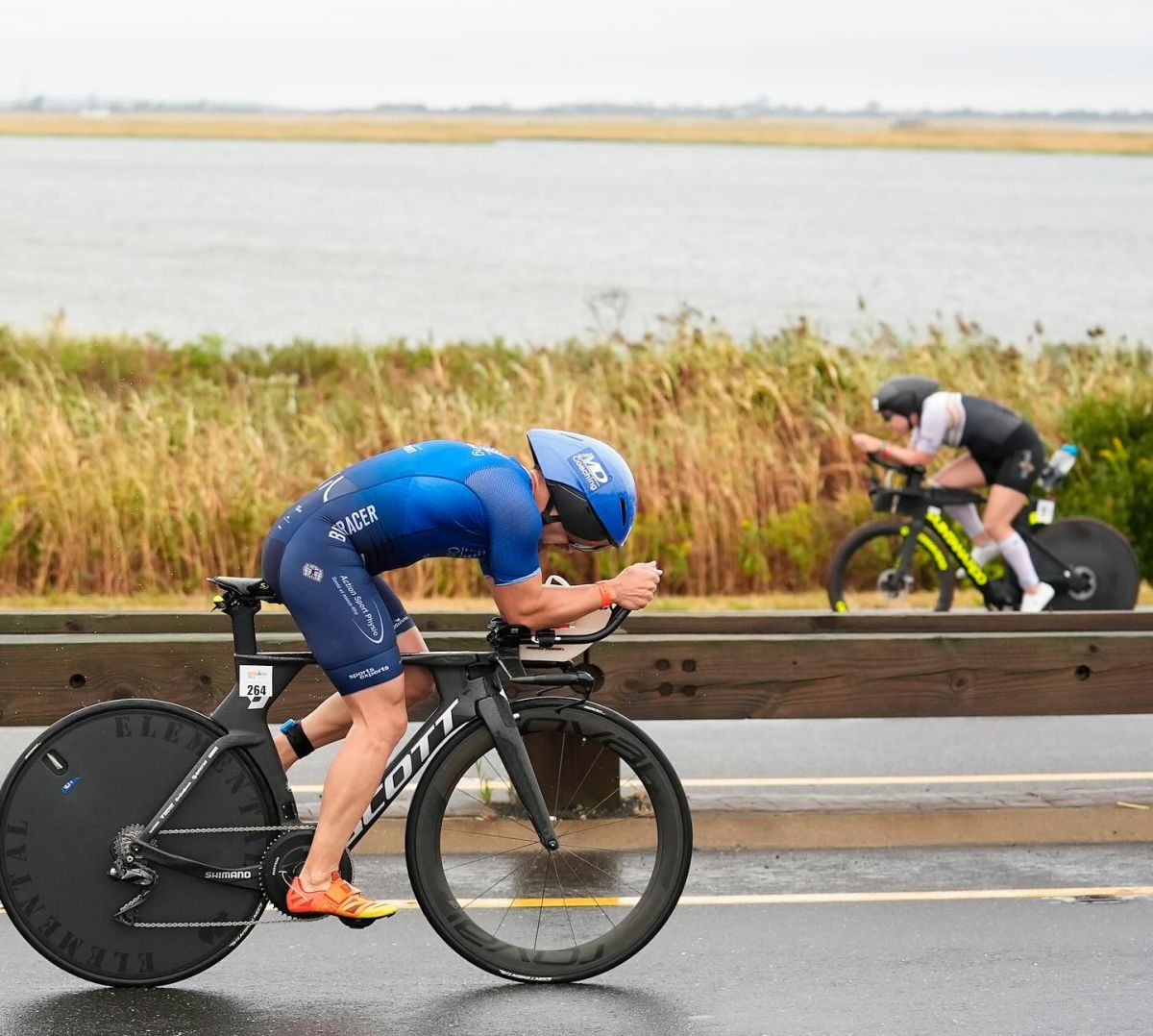
Cos’è la “teoria dei marginal gains” o “teoria dell’1%”? I marginal gains sono letteralmente i guadagni o i risultati marginali. Sostanzialmente, il miglioramento o il raggiungimento dell’obiettivo non avviene puntando tutto e solo su questo, ma occupandosi in maniera prevalente dell’1%, ovvero degli aspetti marginali che possono concorrere a far raggiungere lo scopo.
Se un atleta riesce a migliorare anche solo l’1% in specifiche aree, noterà che la somma di questi piccoli miglioramenti darà come risultato un miglioramento molto più ampio.
Dalla teoria alla pratica
Dave Brailsford, l’ideatore di questa teoria (per semplificare), ha fatto letteralmente miracoli nel 2004, alle Olimpiadi di Atene, dove il team britannico conquistò ben due medaglie d’oro.
Com’era potuto succedere che atleti buoni si trasformassero in atleti olimpionici? Poteva mai essere che alla base di questo successo ci fossero i marginal gains?
Al suo arrivo, Brailsford fece un’analisi di tutti i fattori marginali di disturbo nell’allenamento e nelle gare della squadra, un’analisi minuziosa che andava da quanto e cosa mangiavano fino ai giorni di malattia, alle ore di sonno e al tipo di tessuto delle magliette. Una delle prime cose di cui si accorse fu che la squadra tendeva ad ammalarsi di influenza più volte l’anno, specialmente nei momenti pre-gara, aspetto più che ovvio essendo quelli momenti di stress in cui il sistema immunitario va in “crisi”. Era evidente tra l’altro che il primo che si ammalava di influenza contagiava gli altri.
Brailsford allora per prima cosa ingaggiò un chirurgo che tenne lezioni pratiche a tutta la squadra su come comportarsi, dopo le quali si verificarono solo un paio di casi singoli che vennero circoscritti per tempo e senza che l’intero team sospendesse gli allenamenti per un mese.
In buona sostanza, la teoria dei marginal gains prevede che quando l’atleta arriva a livelli molto elevati della sua prestazione, il miglioramento complessivo è sempre più difficile. I miglioramenti non saranno più a doppia cifra, ma a porzioni dello zero virgola, quindi appunto miglioramenti marginali.
Facile a dirsi, ma anche a farsi?
I marginal gains, però, essendo molto piccoli e diffusi ovunque, hanno bisogno di una visione complessiva dello staff, dell’atleta e di qualunque cosa circondi l’atleta nelle 24 ore. Ecco che allora a questa “seducente” teoria si sono sommate le critiche degli addetti ai lavori, che hanno asserito in pratica che già svolgere allenamento di high performance in modo scientifico vuol dire occuparsi di tutte le aree anche extra performance.
A mio modo di vedere, questa visione affascinante e stimolante (teoria dei marginal gains) è vera solo in parte o addirittura può portare fuori strada i neofiti o gli entusiasti. Spesso atleti professionisti e age group – me ne accorgo lavorandoci insieme -, al momento di fare un’analisi consuntiva della stagione agonistica, tendono a voler scrivere, metaforicamente, un quaderno nuovo e ordinato della loro prossima stagione ricco di tantissimi propositi e idee super stimolanti (peso, alimentazione, biomeccanica, postura, integrazione, preparazione atletica, carico di allenamento ecc.) dimenticandosi di analizzare in modo esaustivo e critico la stagione passata.
In conclusione, sebbene sul piano teorico tutto questo abbia senso, bisogna poi ricondurre la teoria o le idee alla pratica da campo.
La teoria delle cose semplici
Dopo molti anni di esperienza mi sono persuaso che la “teoria delle cose semplici” sia la reale strategia vincente (se ancora non lo conoscete, scoprite il “rasoio di Occam”). Quattro anni fa, solo per fare un esempio, un esperto di “materiale ceramico” per biciclette mi ha spiegato, seppur in modo informale, che il guadagno poteva essere anche intorno ai 0,15-0,3 watt/kg totali su una gara di ciclismo di circa 60’. Appena me lo disse, rimasi molto sorpreso, mi sembrava un guadagno importante. Subito dopo, però, lui continuò dicendomi: “Sai il mondo del triathlon però è figlio del consumismo. Vogliamo i prodotti di ceramica, ma la bicicletta non viene mai lavata, revisionata, pulita. Gli organi in movimento (mozzi e movimento centrale) non sono mai revisionati e le ruote sono spesso utilizzate sia in allenamento sia in gara, senza avere la minima idea della pressione ideale da scegliere per le gomme. Se si adottassero questi comportamenti, si guadagnerebbero molti ma molti più watt senza spendere nulla”.
Si può fare ma…
In sintesi, tutti vogliamo il prodotto speciale che ci faccia migliorare senza fatica, ma una teoria, che sia quella dei marginal gains o un’altra, non basta a cambiare la nostra routine o i nostri difetti.
Se vogliamo realmente modificare la nostra performance, è necessario fare una analisi approfondita della stagione agonistica o di quelle passate e chiedersi veramente cosa ci ha impedito di ottenere una performance migliore.
Avere un coach serve a questo: a confrontarsi in modo chiaro e schietto, non sulla teoria bensì sulla pratica; sulle ore di allenamento, sul carico e sulle intensità. Successivamente sarà sicuramente importante andare a limare i particolari, ma senza mai dimenticare il generale, che spesso, proprio perché noioso e ovvio, tendiamo a “nascondere”.
(english version)
Marginal gains theory: is it really needed to improve performance?
What is the “theory of marginal gains” or “1% theory”? Marginal gains are literally marginal gains or results. Basically, the improvement or achievement of the goal does not take place by focusing everything and only on this, but by dealing mainly with 1%, or the marginal aspects that can contribute to achieving the goal.
If an athlete manages to improve even just 1% in specific areas, he will notice that the sum of these small improvements will result in a much larger improvement.
From theory to practice
Dave Brailsford, the creator of this theory (to simplify), literally worked miracles in 2004, at the Athens Olympics, where the British team won two gold medals.
How did it happen that good athletes turned into Olympians? Could it ever be that marginal gains were at the basis of this success?
Upon his arrival, Brailsford did an analysis of all marginal disturbing factors in team training and competitions, a detailed analysis ranging from how much and what they ate to sick days, sleeping hours and the type of t-shirt fabric. One of the first things he noticed was that the team tended to get sick with the flu several times a year, especially in the pre-match moments, which is more than obvious being those moments of stress when the immune system goes into “crisis”. Among other things, it was evident that the first one who fell ill with the flu infected the others.
Brailsford then first hired a surgeon who gave practical lessons to the whole team on how to behave, after which there were only a couple of individual cases that were circumscribed in time and without the entire team suspending training for a month.
Basically, the theory of marginal gains predicts that when the athlete reaches very high levels of his performance, the overall improvement is increasingly difficult. The improvements will no longer be double-digit, but in portions of the zero point, so precisely marginal improvements.
Easy to say, but also to do?
However, being very small and widespread everywhere, marginal gains need an overall view of the staff, the athlete and everything that surrounds the athlete in the 24 hours. So then to this “seductive” theory were added the criticisms of the experts, who asserted in practice that already carrying out high performance training in a scientific way means taking care of all areas even extra performance.
In my view, this fascinating and stimulating view (marginal gains theory) is only partially true or even can lead novices or enthusiasts astray. Often professional athletes and age groups – I realize this by working together -, when making a final analysis of the competitive season, tend to want to write, metaphorically, a new and tidy notebook of their next season full of many super stimulating intentions and ideas (weight, nutrition, biomechanics, posture, integration, athletic preparation, training load, etc.) forgetting to analyze the past season exhaustively and critically.
In conclusion, although on the theoretical level all this makes sense, we must then bring the theory or ideas back to field practice.
The theory of simple things
After many years of experience I am convinced that the “theory of simple things” is the real winning strategy (if you don’t know it yet, discover the “Occam’s razor”). Four years ago, just to give an example, an expert in “ceramic material” for bicycles explained to me, albeit in an informal way, that the gain could also be around 0.15-0.3 watt / kg total on a race of cycling of about 60 ‘. As soon as he told me, I was very surprised, it seemed like an important gain. Immediately after, however, he continued telling me: “You know the world of triathlon, however, is the child of consumerism. We want ceramic products, but the bicycle is never washed, overhauled, cleaned. The moving parts (hubs and bottom bracket) are never overhauled and the wheels are often used both in training and in racing, without having the slightest idea of the ideal pressure to choose for the tires. If you adopted these behaviors, you would earn many but many more watts without spending anything ”.
It can be done but …
In summary, we all want the special product that makes us improve effortlessly, but one theory, whether it is that of marginal gains or another, is not enough to change our routine or our defects.
If we really want to change our performance, it is necessary to do an in-depth analysis of the competitive season or those of the past and really ask ourselves what prevented us from achieving a better performance.
Having a coach is for this: to confront in a clear and frank way, not on theory but on practice; on training hours, load and intensity. Subsequently it will certainly be important to go and polish the details, but without ever forgetting the general, which we often tend to “hide” precisely because it is boring and obvious.
Ph: Marta Baffi



